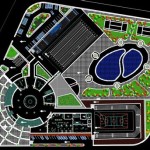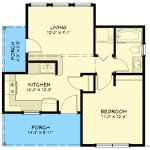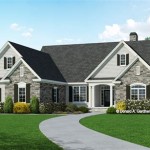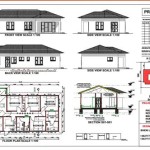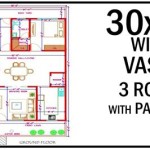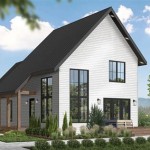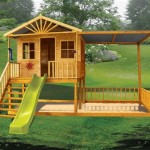Budget-Friendly Home Plans in Kerala: Navigating Affordability and Design
Kerala, known for its lush landscapes and unique architectural heritage, presents particular challenges when it comes to building homes on a budget. The rising costs of land, materials, and labor necessitate careful planning and innovative design strategies to realize the dream of owning a home without incurring unsustainable debt. This article explores various aspects of budget-friendly home plans in Kerala, focusing on key considerations and practical solutions to optimize cost-effectiveness while maintaining structural integrity and aesthetic appeal.
The concept of a "budget home" is subjective and varies based on individual circumstances and expectations. For the purpose of this discussion, a budget home is defined as a dwelling constructed using cost-optimized methods and materials, prioritizing functionality and essential features over elaborate designs and luxury finishes. This requires a meticulous approach to planning, design, and execution, focusing on eliminating unnecessary expenses and maximizing value for money.
One of the initial and most critical steps in planning a budget home is establishing a realistic budget. This involves assessing your financial resources, including savings, potential loans, and any available subsidies or grants. It's crucial to consult with financial advisors to determine your borrowing capacity and understand the associated interest rates and repayment terms. A contingency fund of approximately 10-15% of the total budget should be allocated to cover unforeseen expenses and potential cost overruns. This financial buffer can prove invaluable in mitigating risks and ensuring the project stays within manageable limits.
Furthermore, detailed planning and design are paramount to achieving cost efficiency. Engaging a qualified architect or experienced building designer is highly recommended. They can provide valuable insights into optimizing space utilization, selecting appropriate materials, and minimizing construction complexities. A well-thought-out design can prevent costly revisions during the construction phase and ensure the home meets your needs without exceeding your budget. The design should also consider the specific climatic conditions of Kerala, prioritizing natural ventilation, shading, and rainwater harvesting to reduce long-term operational costs.
Optimizing Design for Cost-Effectiveness
The design phase significantly impacts the overall cost of the home. Simple, rectangular or square layouts are generally more cost-effective than complex, irregularly shaped designs. Minimizing the number of corners and complex roof structures reduces material wastage and construction time. Opting for open-plan living spaces can create a sense of spaciousness without increasing the overall square footage. Carefully consider the placement of windows and doors to maximize natural light and ventilation, reducing the reliance on artificial lighting and air conditioning.
Material selection also plays a crucial role in budget optimization. Locally sourced materials are often more affordable and environmentally friendly than imported alternatives. Consider using readily available materials like laterite stone, which is commonly used in Kerala construction. Explore cost-effective alternatives to traditional materials, such as using pre-engineered doors and windows, or opting for ceramic tiles instead of expensive marble or granite flooring. Research different material options and compare prices and durability to make informed decisions.
Furthermore, phasing the construction process can help manage expenses more effectively. Prioritize the essential structural elements, such as the foundation, walls, and roof, and postpone non-essential features or finishes until later phases when more funds are available. This allows you to move into the home while gradually completing the remaining work, effectively spreading out the construction costs over a longer period. This approach requires careful planning and coordination but can significantly ease the financial burden.
Another aspect of design optimization is vertical expansion feasibility. If the initial budget limits the construction to a single-story structure, the design should account for the possibility of adding an additional floor in the future. This involves ensuring the foundation and structural elements are strong enough to support a future expansion. Planning for vertical expansion offers flexibility and allows you to increase the living space as your needs and financial circumstances evolve.
Leveraging Local Materials and Construction Techniques
Kerala boasts a rich tradition of using locally available materials in construction. Laterite stone, known for its durability and thermal properties, is a widely used and cost-effective option for wall construction. Using locally sourced wood, such as teak or jackfruit wood, can add a touch of traditional Kerala architecture to the home while remaining within budget. Bamboo, a fast-growing and sustainable material, can be used for various structural and decorative elements.
Exploring traditional construction techniques can also offer cost-saving opportunities. Rat-trap bond masonry, for instance, uses bricks laid on their sides to create cavities in the wall, reducing the amount of brick required and improving insulation. This technique is particularly effective in reducing heat gain during the hot summer months, lowering energy consumption for cooling. Mud construction, though requiring more maintenance, is another environmentally friendly and cost-effective option, particularly suitable for areas with readily available clay soil.
However, before adopting traditional techniques, it's crucial to ensure they comply with current building codes and regulations. Consulting with structural engineers is essential to verify the structural integrity and safety of the proposed construction methods. Proper planning and execution are critical to ensure the longevity and performance of the home.
The availability of skilled local labor is another advantage that can be leveraged to reduce construction costs. Engaging experienced local contractors and workers who are familiar with traditional Kerala building techniques can ensure efficient and high-quality workmanship. Obtaining multiple quotes from different contractors and comparing their rates and experience is essential to securing the best value for money. Checking references and reviewing past projects can help assess the contractor's reliability and expertise.
Smart Space Planning and Minimalist Design
Efficient space planning is crucial for maximizing the usability of the available area, particularly in budget homes where minimizing square footage is a priority. Prioritize essential spaces and avoid unnecessary rooms or features. Design for multi-functional spaces that can serve different purposes at different times of the day. For instance, a living room can double as a workspace or a dining area can be integrated with the kitchen.
Minimalist design principles emphasize simplicity, functionality, and understated aesthetics. By embracing a minimalist approach, you can reduce the need for elaborate decorations and expensive furnishings. Opting for simple, clean lines and neutral color palettes can create a sense of spaciousness and tranquility. Focus on quality over quantity when selecting furniture and accessories, choosing durable and functional items that will stand the test of time.
Storage solutions are essential for maintaining a clutter-free and organized living space. Built-in storage units, such as wardrobes and shelves, can maximize space utilization and eliminate the need for bulky freestanding furniture. Utilize vertical space by installing shelves and cabinets that reach the ceiling. Under-stair storage and loft spaces can also provide additional storage areas without increasing the overall footprint of the home.
Effective landscaping can enhance the aesthetic appeal of the home while also contributing to its functionality. Planting trees and shrubs can provide shade, reducing the need for air conditioning and creating a comfortable outdoor living space. Consider incorporating a kitchen garden to grow your own vegetables and herbs, reducing grocery expenses and promoting a healthy lifestyle. Rainwater harvesting systems can be integrated into the landscape design to collect and store rainwater for irrigation and other non-potable uses, reducing water bills.
In conclusion, building a budget home in Kerala requires careful planning, innovative design solutions, and a strategic approach to material selection and construction techniques. By prioritizing functionality, embracing minimalist design principles, and leveraging locally available resources, it's possible to realize the dream of owning a comfortable and affordable home that reflects the unique architectural heritage of Kerala.

Beautiful Low Budget Kerala Home Plan In 960 Sq Ft Under 10 Lakhs With 03 Bedrooms

3 Bedroom Low Cost Single Floor Home Design With Free Plan

Modern Budget 3 Bedroom Beautiful Villa In Kerala With 947 Sqft Free Plan

Low Budget Kerala House For 4 Lakhs With 2 Bedrooms In 550 Square Feet Plan

How To Plan A Low Budget Single Floor House In Kerala
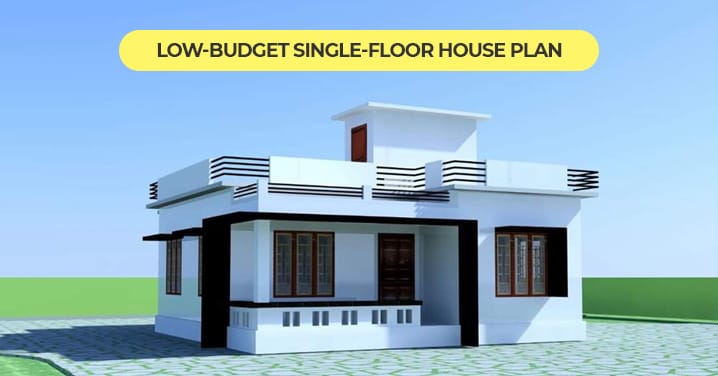
How To Plan A Low Budget Single Floor House In Kerala

Residential Projects Low Cost House Construction Thrissur Kerala Traditional In

20 Lakh Budget Home Kerala Style 2 Bedroom House Plan Design

Simple 5 Lakh Budget House Plans 2025

Low Budget Home 7 Lakhs 710 Sqft 2 Bhk Kerala House Design Tour With Floor Plan

